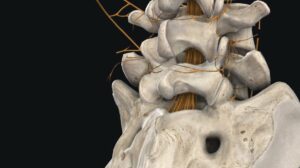NEW YORK (Reuters Health) – In patients with vestibular schwannomas related to neurofibromatosis type 2 (NF2), gamma knife radiosurgery can achieve good tumor control in about two-thirds of cases and preservation of hearing in about one-third, according to the results of a small study.
Radiosurgery has emerged as a first-line treatment for sporadic vestibular schwannomas, but only a few case series have described this treatment for NF2-associated schwannomas, which are a hallmark of the disease. In particular, the impact of this treatment on tumor control and hearing preservation, two endpoints that are usually at odds with each other, is unclear.
As reported in the January 15th issue of Cancer, Dr. Dong Gyu Kim, from Seoul National University College of Medicine, Korea, and colleagues assessed the outcomes of 30 NF2 patients who underwent radiosurgery for a total of 36 vestibular schwannomas.
The median schwannoma volume was 3.2 mL. The median clinical and radiologic follow-up periods were 48.5 and 36.5 months, respectively.
Actuarial tumor control rates at 1, 2, and 5 years were 81%, 74%, and 66%, respectively. Salvage surgery was required for five cases with failed tumor control. Low marginal dose and young age were both predictive of poor tumor control.
The 1-, 2-, and 5-year hearing preservation rates for the 16 tumors with serviceable ipsilateral hearing at baseline were 50%, 45%, and 33%, respectively. An improvement in hearing immediately after radiosurgery was predictive of hearing preservation.
Damage to the facial and cranial nerves was minimal with use of low doses, and none of the patients developed a secondary malignancy, the authors note.
“Radiosurgery should be included in the treatment options for NF2 patients as a less invasive treatment modality,” the team concludes.
Reference:
Cancer 2009;115:390-398.




